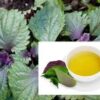Dim Sum: The Quintessential Cantonese Cuisine

Dim sum, a beloved culinary tradition originating from Guangdong (Canton) province in Southern China, has become a global phenomenon. Known for its small, bite-sized portions and diverse range of flavors, dim sum represents not just food, but a cultural experience. This article explores the world of Cantonese-style dim sum, highlighting its origins, variations, cultural significance, and popular dishes. Whether you’re a seasoned dim sum enthusiast or a newcomer to the cuisine, you’ll find everything you need to appreciate and enjoy this culinary art form.
The Origins of Cantonese Dim Sum
Dim sum has a long and rich history that dates back over a thousand years. The concept of serving small, individual portions of food originated during the Tang Dynasty (618-907 AD) when travelers would stop at teahouses to rest. These teahouses served simple dishes alongside tea, and over time, the idea of pairing tea with food evolved into what we now recognize as dim sum.
During the Song Dynasty (960-1279 AD), the popularity of tea houses grew, and the custom of serving a variety of small dishes alongside tea became more widespread in the Guangdong region. In fact, it was in Guangdong, specifically in the cities of Guangzhou and Hong Kong, where dim sum as we know it today truly took shape. The phrase “dim sum” itself, meaning “to touch the heart” in Cantonese, reflects the practice of offering small, heartwarming dishes that cater to various tastes.
As Hong Kong became a bustling metropolis and international trade hub, dim sum became a popular food option, appealing to people of all backgrounds. The traditional Cantonese approach to dim sum—where it is served with tea and enjoyed in a social, family-style setting—remains at the heart of its cultural significance today.
Dim Sum and Its Cultural Significance
In Cantonese culture, dim sum is more than just food; it’s a social ritual. The act of sharing dim sum with friends and family is a cherished tradition, particularly during brunch or lunch hours. The phrase “yum cha,” which means “drinking tea” in Cantonese, is used interchangeably with “dim sum” and signifies the leisurely, communal experience of enjoying a variety of small dishes paired with tea.
Dim sum plays an integral role in family gatherings, celebrations, and special occasions. It’s common for families to gather on weekends to enjoy dim sum together, chatting and savoring different flavors. Tea, served alongside dim sum, is equally important in the dining experience. The tea is typically brewed in teapots and served in small cups, enhancing the flavors of the food while promoting digestion and relaxation.
Dim sum is also a food that celebrates variety. It can range from steamed dumplings filled with delicate shrimp or pork, to crispy spring rolls, to sweet desserts. Each dish has its own unique flavor, texture, and cooking method, making dim sum a complex and multifaceted dining experience.
Popular Cantonese Dim Sum Dishes
The wide variety of dim sum dishes available can make choosing what to eat a fun and delicious challenge. Below are some of the most popular and iconic Cantonese-style dim sum dishes that you can find in restaurants around the world:
1. Har Gow (Steamed Shrimp Dumplings)
One of the most iconic dim sum dishes, har gow features translucent dumpling wrappers filled with a mixture of plump shrimp, bamboo shoots, and sometimes pork fat. The dumplings are steamed to perfection, offering a delicate and slightly chewy texture. Har gow is beloved for its mild, slightly sweet flavor and its tender yet firm bite.
2. Siu Mai (Pork and Shrimp Dumplings)
Siu mai are open-topped steamed dumplings made from a mixture of minced pork, shrimp, mushrooms, and sometimes a dash of seasoning. The filling is juicy and flavorful, while the wrapper is thin and soft. Siu mai is one of the most popular choices for dim sum, often served with a sprinkle of fish roe on top for an added touch of luxury.
3. Char Siu Bao (BBQ Pork Buns)
Char siu bao are soft, fluffy steamed buns filled with a savory and sweet filling of BBQ pork. The dough is pillowy and slightly sweet, complementing the rich, caramelized flavor of the char siu (BBQ pork). This dish is a dim sum classic and is often eaten as a snack or part of a larger meal.
4. Cheung Fun (Steamed Rice Noodle Rolls)
Cheung fun consists of thin rice noodle sheets rolled around fillings like shrimp, beef, or barbecued pork. The rolls are steamed to achieve a silky, delicate texture. These rice noodle rolls are usually drizzled with a sweet soy-based sauce before serving. Their soft texture and light flavor make them a popular choice for dim sum lovers.
5. Spring Rolls (Chun Juan)
Spring rolls are a crispy, deep-fried dim sum dish that can be filled with a variety of ingredients, such as shrimp, pork, vegetables, or a combination of the two. The golden, crispy outer layer contrasts beautifully with the tender fillings inside. Spring rolls are often served with a side of sweet and sour dipping sauce to enhance the flavor.
6. Lo Mai Gai (Sticky Rice with Lotus Leaf)
Lo mai gai is a sticky rice dish wrapped in a lotus leaf and steamed. The sticky rice is typically mixed with chicken, Chinese sausage, mushrooms, and sometimes salted egg yolk. The lotus leaf imparts a subtle fragrance to the rice, making this dish fragrant and delicious.
7. Taro Dumplings (Wu Gok)
Taro dumplings are deep-fried dim sum that consists of a crunchy, golden-brown crust filled with a savory mixture of minced pork and vegetables. The outer layer is made from mashed taro, which gives the dumplings a rich, slightly sweet taste and a unique texture. The contrast between the crispy exterior and the savory interior is a hallmark of this dish.
8. Egg Tarts (Dan Tat)
For those with a sweet tooth, egg tarts are a must-try. These tarts feature a delicate, buttery crust filled with a smooth, egg-based custard. The custard is lightly sweet and slightly savory, offering a wonderful balance of flavors. Egg tarts are a popular dim sum dessert and are perfect for ending a meal on a sweet note.
Dim Sum Etiquette: How to Enjoy Dim Sum Like a Local
Eating dim sum is not just about the food; it’s also about the experience. Understanding a few basic dim sum dining etiquettes can enhance your enjoyment and appreciation of the meal.
- Order from the Cart or Menu: In traditional dim sum restaurants, servers push carts loaded with freshly made dim sum dishes around the dining room. You can point to the dishes you want to try, and the server will bring them to your table. Alternatively, some restaurants offer a menu where you can order dishes directly.
- Eat Family-Style: Dim sum is meant to be shared. It’s common to order a variety of dishes for the table so everyone can try a little bit of everything. Don’t hesitate to share your dishes and try what others have ordered.
- Pair with Tea: Dim sum is traditionally served with Chinese tea. The most common teas served are oolong, pu-erh, or jasmine tea. Tea not only complements the flavors of the dim sum but also aids in digestion.
- Respect the Trolley: If you’re dining at a dim sum restaurant where the servers wheel carts around, be sure to wait for the trolley to come to your table. If you’re not sure what’s in a particular dish, feel free to ask the server for clarification.
- Use Chopsticks: Dim sum is traditionally eaten with chopsticks. If you’re new to using chopsticks, practice beforehand to ensure a smooth and enjoyable dining experience.
Making Dim Sum at Home
While dim sum is often best enjoyed in a traditional Cantonese teahouse, making it at home can be a fun and rewarding experience. With the right ingredients, tools, and a little patience, you can recreate your favorite dim sum dishes in your own kitchen. Here are some tips for making dim sum at home:
- Prepare the Fillings in Advance: Many dim sum dishes, like dumplings and buns, require a filling that must be prepared ahead of time. Minced meats, vegetables, and seasonings should be mixed and marinated to develop the full flavor.
- Invest in Steaming Equipment: A bamboo steamer is the traditional tool used for steaming dim sum. If you don’t have one, a metal steamer basket or a makeshift steamer using a pot and a heatproof dish will also work.
- Use Ready-Made Wrappers: While making dumpling wrappers from scratch is a satisfying endeavor, it can be time-consuming. Many grocery stores sell pre-made wrappers for dumplings, buns, and rice noodle rolls, which can save you a lot of time.
- Experiment with Different Fillings: Dim sum is highly versatile. While traditional recipes call for specific fillings, you can experiment with different combinations of meats, seafood, and vegetables to create your own unique dim sum creations.
- Gather a Group: Dim sum is a social meal, so invite friends or family over to enjoy the experience together. Making dim sum at home is a fantastic way to bond over a shared meal and enjoy the flavors of Cantonese cuisine.
Conclusion
Cantonese-style dim sum is a culinary tradition that offers a unique and delicious dining experience. From its humble origins in teahouses to its global popularity today, dim sum has become an integral part of Cantonese culture. The variety of flavors, textures, and cooking methods involved in dim sum makes it an endlessly enjoyable cuisine that
can be enjoyed in a casual setting or as part of a grand celebration.
Whether you’re dining in a traditional tea house in Hong Kong or experimenting with dim sum recipes in your own kitchen, the joy of dim sum lies in the shared experience of savoring small, flavorful dishes while enjoying the company of loved ones. So the next time you’re in the mood for something both tasty and cultural, indulge in the wonderful world of Cantonese-style dim sum.

